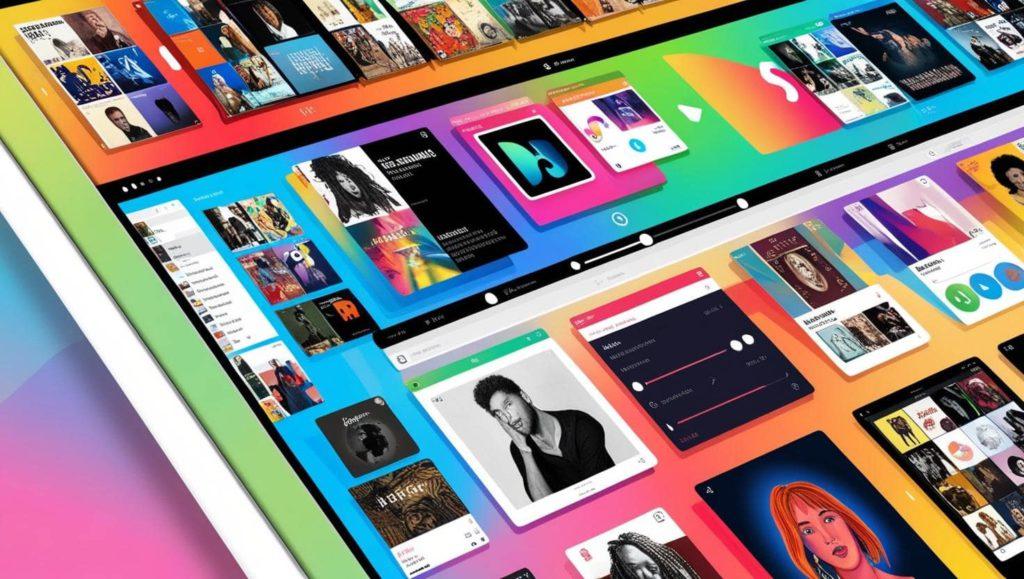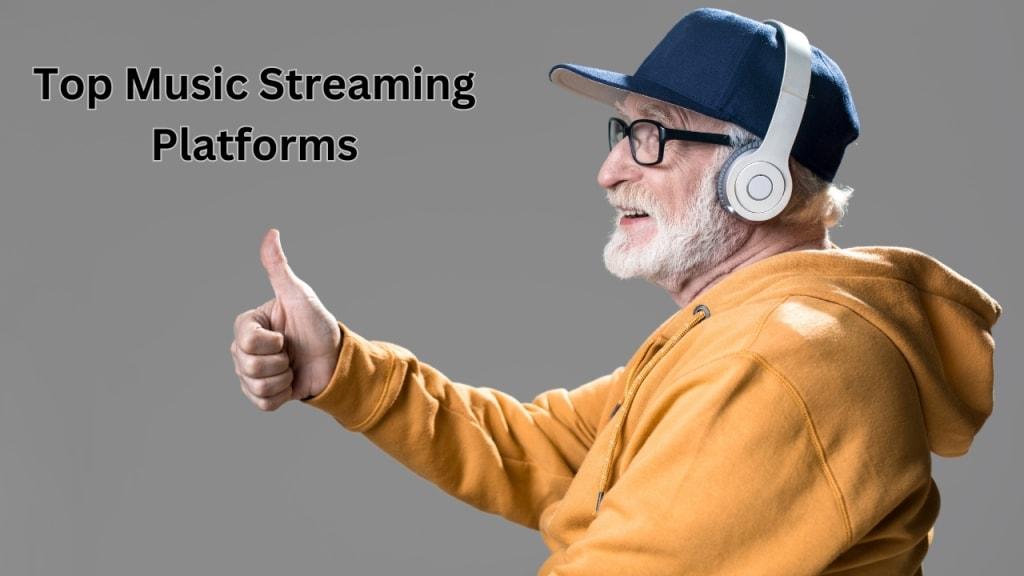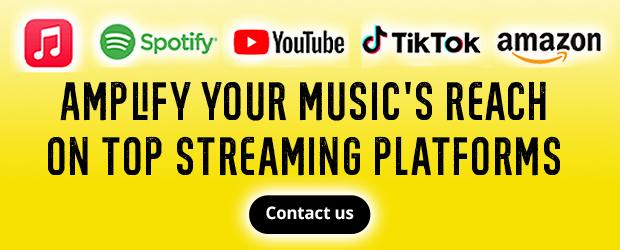In an era where melodies flow as freely as digital waves, a quiet revolution is reshaping the music industry. The rise of independent musicians on streaming platforms marks a shift from traditional gatekeepers to a landscape where creativity and connection take center stage. No longer confined by record labels or physical distribution, artists are harnessing the power of technology to reach listeners directly, crafting their own paths to success. This transformation not only challenges the conventional music business model but also enriches the cultural soundscape with diverse voices and fresh perspectives. As streaming platforms continue to evolve, the story of independent musicians is becoming a defining chapter in the soundtrack of the digital age.
Table of Contents
- The Evolution of Music Distribution in the Digital Age
- Empowering Artists Through Direct Fan Engagement
- Navigating Revenue Models and Maximizing Earnings
- Building a Unique Brand Identity in a Crowded Market
- Strategies for Sustaining Growth and Long-Term Success
- In Summary
The Evolution of Music Distribution in the Digital Age
Digital transformation has fundamentally shifted how music reaches listeners, dismantling traditional gatekeepers and empowering artists to take control of their distribution. Where record labels once controlled access to audiences through physical sales and radio play, streaming platforms now offer a direct channel for independent musicians to showcase their work globally. This democratization has not only expanded the variety of music available but has also cultivated a vibrant ecosystem where creativity thrives free from conventional constraints.
One of the most remarkable impacts of this evolution is the rise of artist autonomy. Musicians can now upload their tracks to platforms like Spotify, Apple Music, and Bandcamp without intermediaries, retaining ownership of their masters and creative rights. This shift has encouraged a surge in diverse genres and niche communities, enabling artists to connect with highly targeted audiences. The result is a dynamic marketplace where authenticity and originality often trump mass appeal.
Key advantages for independent musicians include:
- Global reach with minimal upfront costs
- Direct fan engagement through social features and analytics
- Flexible release schedules without label-imposed deadlines
- Opportunities for innovative revenue streams such as merchandise and exclusive content
To illustrate the shift in revenue models, consider the simplified comparison below:
| Distribution Method | Artist Control | Revenue Share | Audience Reach |
|---|---|---|---|
| Traditional Label | Low | ~15-20% | Moderate |
| Streaming Platforms | High | ~70-85% | Global |
| Direct-to-Fan | Complete | 100% | Niche but highly engaged |
As technology continues to advance, the landscape of music distribution will likely evolve further, but the foundation laid by streaming platforms has already rewritten the rules. Independent musicians now hold unprecedented power to craft their careers on their own terms, signaling an exciting era of musical innovation and diversity.
Empowering Artists Through Direct Fan Engagement
Independent musicians are redefining the music industry by building genuine connections with their fans, bypassing traditional gatekeepers. This direct interaction allows artists to receive immediate feedback and tailor their creative processes in real-time, fostering a community where fans feel valued and heard.
Key benefits of this fan-artist relationship include:
- Instant engagement: Social media and streaming platforms enable artists to share updates, behind-the-scenes content, and new releases directly with their audience.
- Monetization opportunities: Crowdfunding, merchandise sales, and exclusive content subscriptions offer fans a way to actively support their favorite musicians.
- Creative freedom: Without label constraints, artists experiment with genres and styles that resonate authentically with their fans.
Streaming services now provide robust analytics that help musicians understand their listener demographics and preferences, empowering smarter marketing and tour planning. This data-driven approach allows artists to focus their efforts where they matter most, creating a sustainable career path.
| Fan Engagement Tool | Purpose | Example |
|---|---|---|
| Live Streaming | Real-time interaction | Instagram Live concerts |
| Exclusive Content | Fan loyalty | Patreon memberships |
| Direct Messaging | Personalized connection | Discord fan groups |

Navigating Revenue Models and Maximizing Earnings
For independent musicians, understanding how to generate income through streaming platforms is crucial in turning passion into profit. While the landscape may seem daunting, it offers multiple avenues to monetize music beyond traditional album sales. Artists can tap into various revenue streams, each with distinct benefits and challenges, to create a sustainable career.
Direct streaming royalties form the backbone of earnings. Platforms pay artists based on the number of streams, but rates vary widely and often favor major labels. To maximize these royalties, musicians must focus on increasing their play counts through strategic playlist placements, fan engagement, and consistent releases. But relying solely on streams can be limiting.
Additional income can come from complementary sources such as:
- Merchandise sales: Leveraging streaming audiences to sell branded items.
- Sync licensing: Placing music in films, commercials, or video games.
- Fan support platforms: Using Patreon or Bandcamp for direct patronage.
| Revenue Source | Potential Earnings | Effort Level |
|---|---|---|
| Streaming Royalties | Low to Moderate | Medium |
| Merchandise Sales | Moderate to High | High |
| Sync Licensing | High | Low to Medium |
| Fan Support | Moderate | Medium |
Mastering these revenue streams requires creativity, persistence, and a willingness to diversify. By blending multiple income sources and harnessing the power of digital tools, independent musicians can carve out a lucrative niche in the streaming era.

Building a Unique Brand Identity in a Crowded Market
In today’s saturated music landscape, standing out requires more than just talent; it demands a distinct personality that resonates deeply with listeners. Independent musicians must craft a brand that tells a compelling story, one that reflects their unique sound, values, and artistic journey. This identity becomes a beacon for fans searching for authenticity amidst a sea of content.
Visual consistency plays a pivotal role in this process. From album artwork and social media aesthetics to website design and merchandise, every visual element should echo the artist’s essence. Consistent branding not only builds recognition but also fosters trust and emotional connection, transforming casual listeners into loyal advocates.
Moreover, cultivating a unique voice through engaging content-whether behind-the-scenes videos, personal stories, or interactive live sessions-creates a multidimensional experience that extends beyond music. This holistic approach invites fans to become part of the narrative, making the artist’s brand feel alive and approachable.
- Define your core message and values
- Create a memorable visual style
- Engage audiences with authentic storytelling
- Leverage consistent branding across platforms
| Brand Element | Purpose | Example |
|---|---|---|
| Logo | Instant recognition | Minimalist icon reflecting sound waves |
| Color Palette | Emotional tone | Earthy tones for organic vibes |
| Typography | Voice personality | Handwritten fonts for intimacy |
| Content Style | Fan engagement | Casual, behind-the-scenes videos |

Strategies for Sustaining Growth and Long-Term Success
Independent musicians aiming to thrive in the streaming era must adopt a dynamic approach that balances creativity with strategic planning. Consistent engagement with fans through social media and personalized communication helps build a loyal community that supports not only new releases but also merchandise, live events, and crowdfunding campaigns. This ongoing dialogue transforms listeners into advocates, creating a sustainable ecosystem around the artist’s brand.
Leveraging data analytics provided by streaming platforms is another cornerstone for long-term success. By understanding which tracks resonate most, where listeners are located, and how they interact with different types of content, musicians can tailor their marketing efforts and touring schedules with precision. This insight-driven approach reduces guesswork and maximizes the impact of every release.
Collaborations and diversification also play a pivotal role. Partnering with other artists, producers, or even brands opens new audiences and revenue streams. Additionally, tapping into alternative income sources such as sync licensing, Patreon, and exclusive digital content ensures that income is not solely dependent on streaming royalties.
| Strategy | Benefit | Example |
|---|---|---|
| Fan Engagement | Builds loyalty and advocacy | Live Q&A sessions |
| Data Analytics | Informs marketing and touring | Geo-targeted releases |
| Collaborations | Expands audience reach | Cross-genre features |
| Diversification | Stabilizes income | Patreon memberships |
In Summary
As the digital tide continues to reshape the music landscape, independent musicians stand at the forefront of a new era-one where creativity meets accessibility without gatekeepers in sight. Streaming platforms have not only amplified their voices but also redefined what it means to be heard. While challenges remain, the rise of these artists signals a vibrant, ever-evolving soundtrack to our times-one composed not by industry giants alone, but by the diverse and determined creators who dare to share their stories on their own terms. In this unfolding symphony, the future of music belongs to those bold enough to play their own tune.

